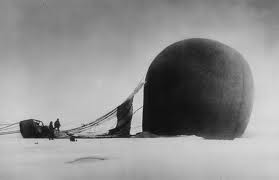It was a swelteringly hot afternoon. The mercury had risen above 110 Fahrenheit and there was not a whisper of wind. But the heat inside the boxing ring in Reno, Nevada, was nothing when compared to the fiery atmosphere in the country at large.
The fourth of July, 1910, was to witness one of the most infamous boxing bouts in history - one that pitched black against white in a forlorn and foolish bid to demonstrate white racial supremacy.
The two men in the ring were both undisputed champions. Jack Johnson, the black-skinned son of an ex-slave, had been named World Heavyweight Champion in 1908 after successfully knocking out the Canadian fighter, Tommy Burns. His victory had caused such racial animosity among whites that boxing promoters began to search for a ‘Great White Hope’ to crush the black upstart.
 |
| James Jeffires: white America |
But there was one problem. He was seriously out of shape by the time it came to fight Johnson. He hadn’t fought for six years and was hugely overweight. He also had little interest in the overtly racist fight, being quite content with his new life as a farmer.
He was finally tempted back into the ring by the offer of a staggering $120,000. There was intense nationwide interest in the fight and racial tension increased dramatically in the days beforehand. ‘No ring contest ever drew such an attendance,’ noted the Los Angeles Herald, ‘and never before was so
many thousands of dollars fought for or paid by the sport-loving public to
see a fight.’
To prevent any violence in the arena, guns were prohibited, along with the sale of alcohol.
White-skinned Jeffries remained out of the limelight until the day of the fight, whereas Johnson did everything he could to court publicity. Confident he would win, he appeared for interviews and photo-shoots. He was a celebrity athlete before his time and his constant womanising (with white women) ensured that he was a regular feature in the gossip columns.
 |
| The fight: a great deal at stake. |
The outcome triggered immediate race riots across the United States. Johnson's decisive victory left many hard-line white supporters feeling deeply humiliated.
According to the Los Angeles Herald, ‘race rioting broke out like prickly heat all over the country between whites, angry and sore because Jeffries had lost
the fight at Reno, and negroes, jubilant that Johnson had won.’
Blacks were jubilant; they hailed Johnson's victory as a victory for racial advancement.
In some cities, the police joined forces with furious white citizens in order to subdue the black revellers. There were murders, knife-fights and even running gun battles. In New York, Chicago and other cities, violence spread throughout the poorer areas. In all, riots occurred in more than 25 states and 50 cities. There were thirteen certified deaths and hundreds more were injured, some seriously.
 |
| It's real hot today. |
The would-be censors found heavyweight support in former President Roosevelt, an avid boxer. He wrote an article supporting the banning of the film.
Not until 2005 did the Library of Congress decree that the film was of such historic importance that it should be listed on the National Film Register. Almost a century after one of the most infamous fights in boxing history, the clash between black and white has finally been granted its official place in history.


























